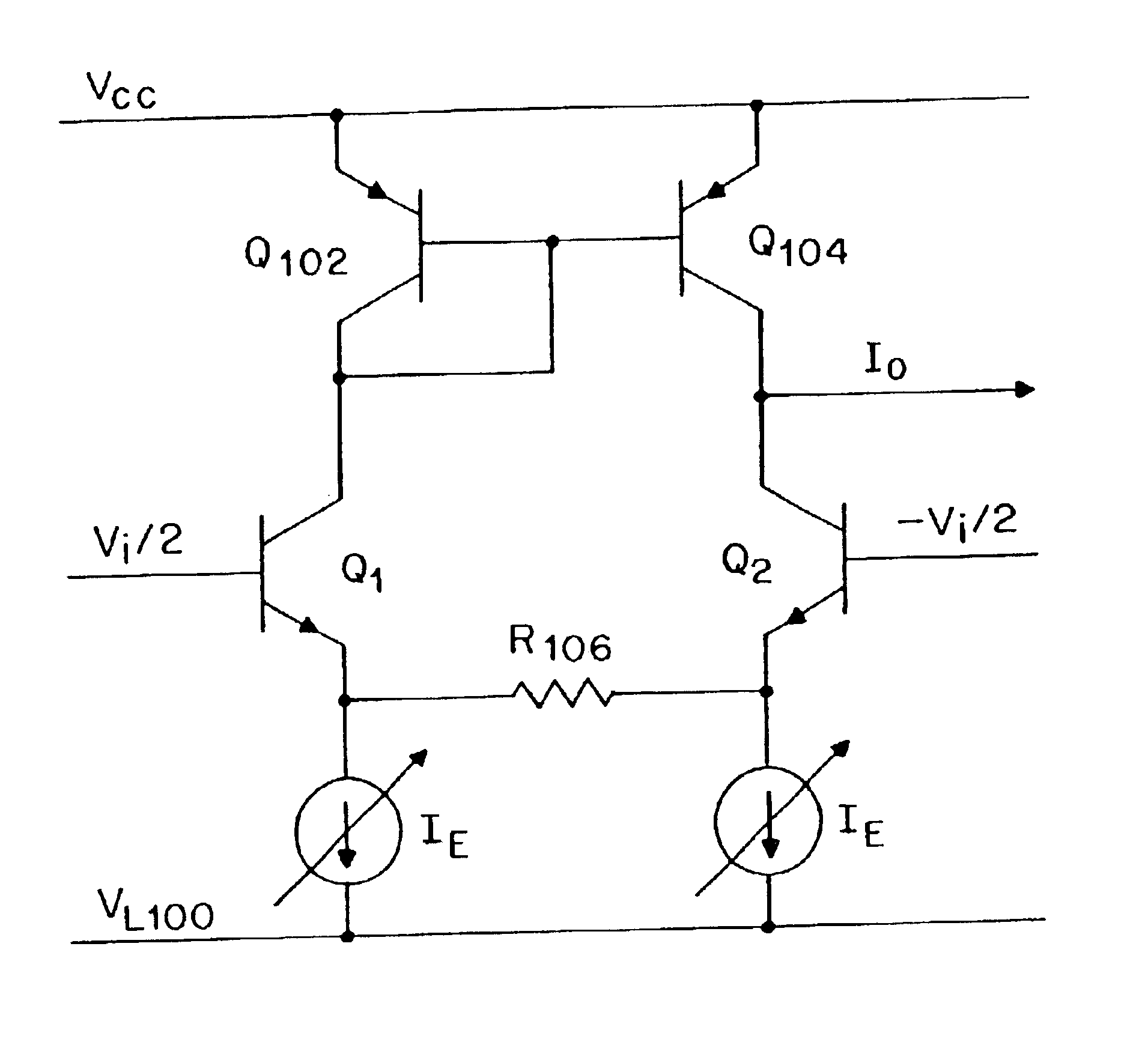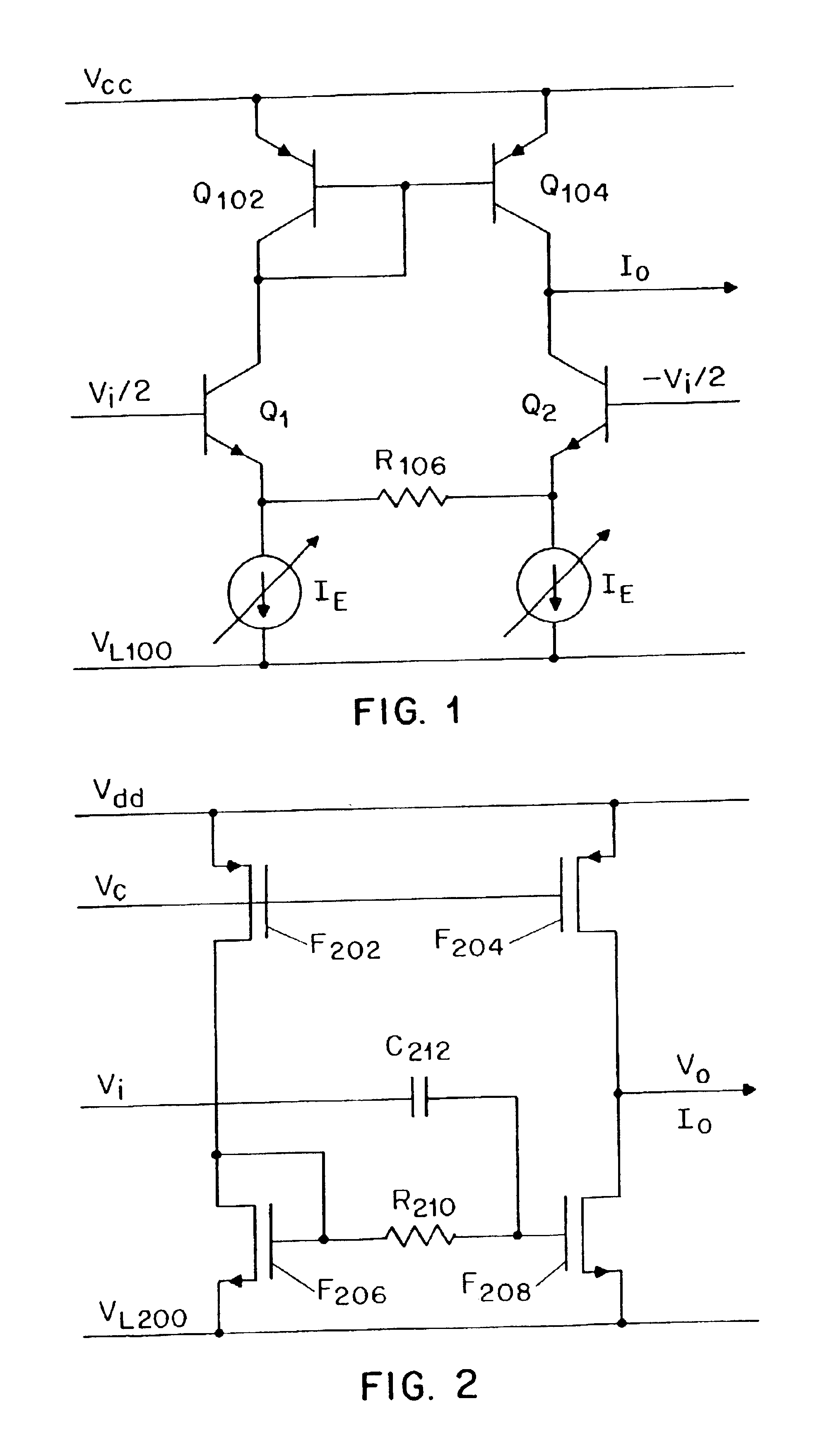Circuits with dynamic biasing
a dynamic biasing and circuit technology, applied in pulse manipulation, frequency selective two-port network, pulse technique, etc., can solve the problem that biases can, in some cases, interact with signals, and achieve the effect of avoiding excessive interaction and high signal-to-noise ratio
- Summary
- Abstract
- Description
- Claims
- Application Information
AI Technical Summary
Benefits of technology
Problems solved by technology
Method used
Image
Examples
Embodiment Construction
FIG. 1 illustrates an example of a transconductor circuit which is dynamically biased in accordance with the invention. The circuit of FIG. 1 is powered by voltage sources VCC and VL100. It is to be noted that voltage (i.e., electrical potential) is inherently relative, and accordingly, the term “voltage source,” as used herein, is defined to include ground (i.e., a voltage source producing a voltage of zero). In particular, in the circuit of FIG. 1, either of VCC and VL100 can be a connection to ground. The same is true for at least one voltage source in each of the circuits disclosed herein.
In the circuit of FIG. 1, transistors Q102 and Q104 form a current mirror which sends current through transistors Q1 and Q2, respectively. The emitters of transistors Q1 and Q2 are connected by a resistor R106. Each of transistors Q1 and Q2 is biased with a bias current IE which flows through its current-carrying terminals—specifically its emitter and collector. The transconductor of FIG. 1 is ...
PUM
 Login to View More
Login to View More Abstract
Description
Claims
Application Information
 Login to View More
Login to View More - R&D
- Intellectual Property
- Life Sciences
- Materials
- Tech Scout
- Unparalleled Data Quality
- Higher Quality Content
- 60% Fewer Hallucinations
Browse by: Latest US Patents, China's latest patents, Technical Efficacy Thesaurus, Application Domain, Technology Topic, Popular Technical Reports.
© 2025 PatSnap. All rights reserved.Legal|Privacy policy|Modern Slavery Act Transparency Statement|Sitemap|About US| Contact US: help@patsnap.com



